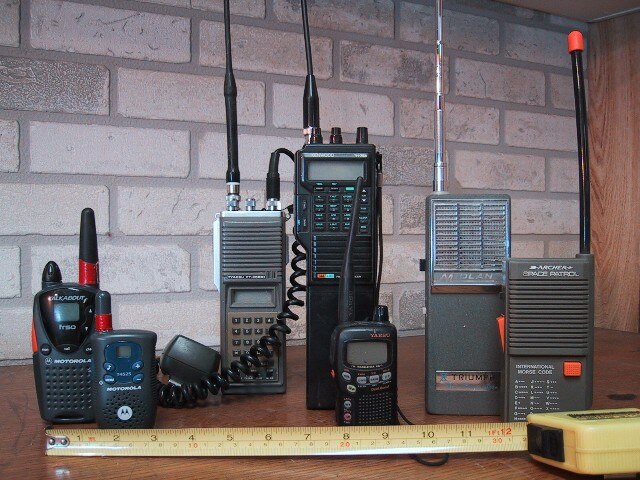A walkie-talkie, more formally known as a handheld transceiver (HT), is a hand-held, portable, two-way radio transceiver. Its development during the Second World War has been variously credited to Donald Hings, radio engineer Alfred J. Gross, Henryk Magnuski and engineering teams at Motorola. First used for infantry, similar designs were created for field artillery and tank units, and after the war, walkie-talkies spread to public safety and eventually commercial and jobsite work.
Recreational, toy and amateur radio walkie-talkies
Assorted two-way FRS and GMRS walkie talkies with hand mic
Noemfoor, Dutch New Guinea, July 1944. A US soldier (foreground) uses a Handie-Talkie during the Battle of Noemfoor.
A modern Project 25 capable professional walkie-talkie
In radio communication, a transceiver is an electronic device which is a combination of a radio transmitter and a receiver, hence the name. It can both transmit and receive radio waves using an antenna, for communication purposes. These two related functions are often combined in a single device to reduce manufacturing costs. The term is also used for other devices which can both transmit and receive through a communications channel, such as optical transceivers which transmit and receive light in optical fiber systems, and bus transceivers which transmit and receive digital data in computer data buses.
A decapped integrated circuit of a transceiver used in handheld communication devices and radio equipment as a modem extension. On-die passfilters are visible.
100BASE-TX connected to a 100BASE-FX transceiver






